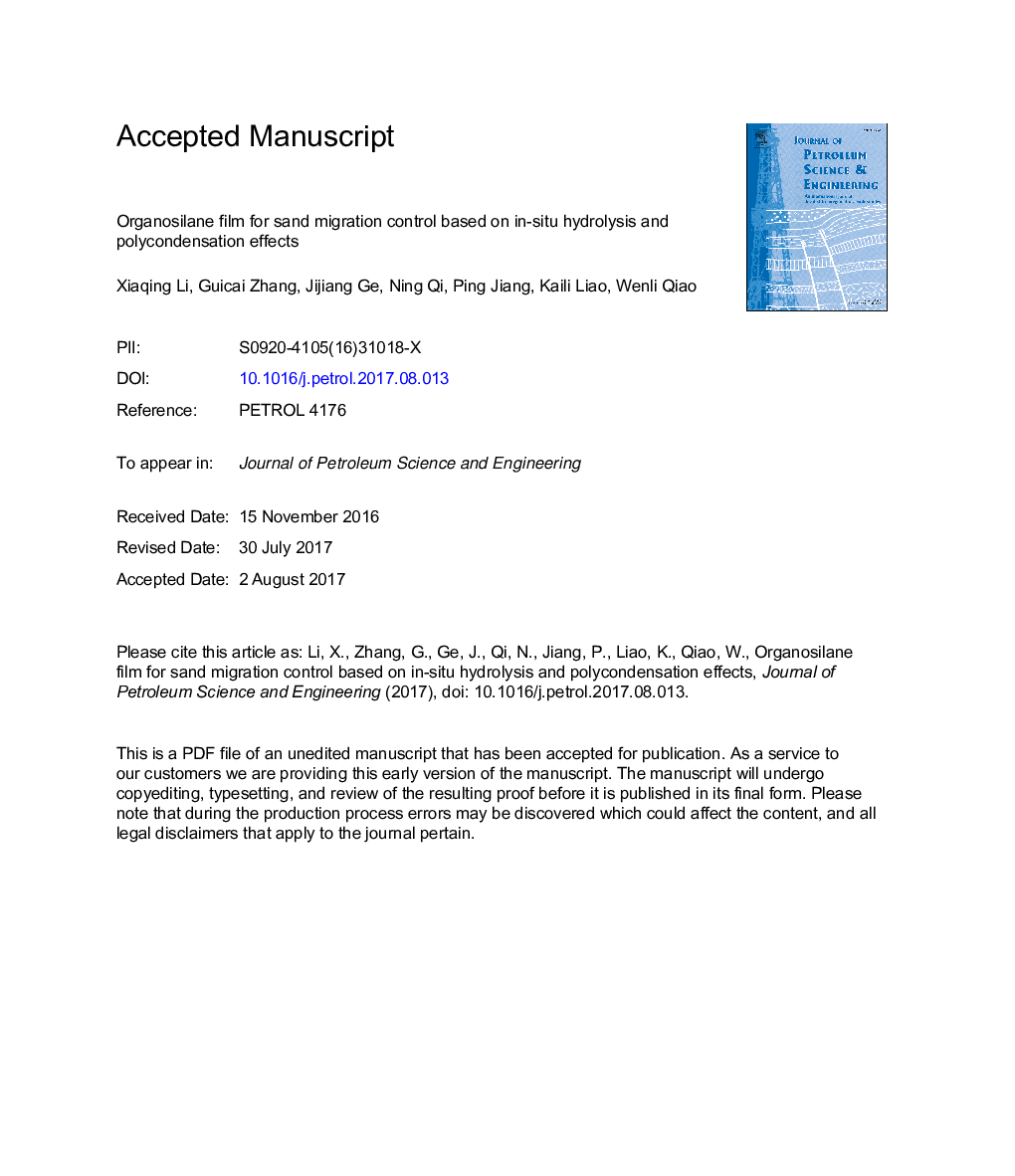| Article ID | Journal | Published Year | Pages | File Type |
|---|---|---|---|---|
| 5484067 | Journal of Petroleum Science and Engineering | 2017 | 27 Pages |
Abstract
Loosely consolidated or unconsolidated reservoir is susceptible to sand migration that results in rapid production decline and short-lived stimulation enhancement. In this study, water-soluble organosilane used for sand migration control was proposed by considering in-situ hydrolysis and polycondensation effects. A variety of organosilanes were screened by evaluating their hydrolysis and polycondensation rate. The suitable structure of organosilane for sand consolidation was determined. Based on the selected organosilane FX, various factors influencing hydrolysis and condensation rates were studied to determine the usage of organosilane. The result indicates that the rate of hydrolysis and polycondensation dominates the consolidation performance of organosilane by changing the amount of active Si-OH reacting with sand surface. HCl was used to control hydrolysis and polycondensation rate of the organosilane with appropriate formation temperature, operation and shut-in time. The various process control parameters were optimized with the organosilane concentration of 3%-5%, the catalytic HCl concentration of 1%-3%, and formation temperature lower than 100 °C. Static and dynamic sand stabilization experiment showed that the organosilane had a high compressive strength, little loss of permeability, long-term stability against typical formation fluids, and wide compatibilities with various types of acidizing slug. Micro-experiment confirmed the in-situ generation of a hydrophobic film on the touchpoint of sand surface connecting migrated sand with matrix.
Related Topics
Physical Sciences and Engineering
Earth and Planetary Sciences
Economic Geology
Authors
Xiaqing Li, Guicai Zhang, Jijiang Ge, Ning Qi, Ping Jiang, Kaili Liao, Wenli Qiao,
